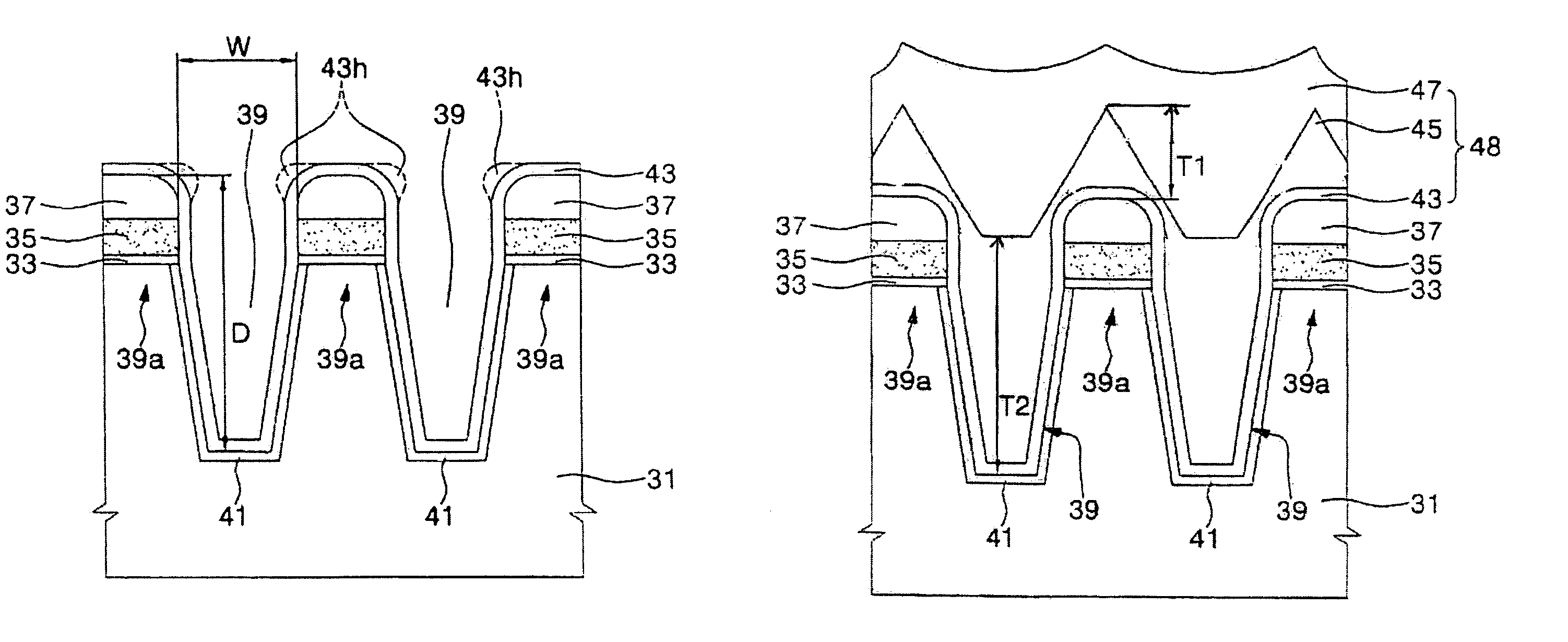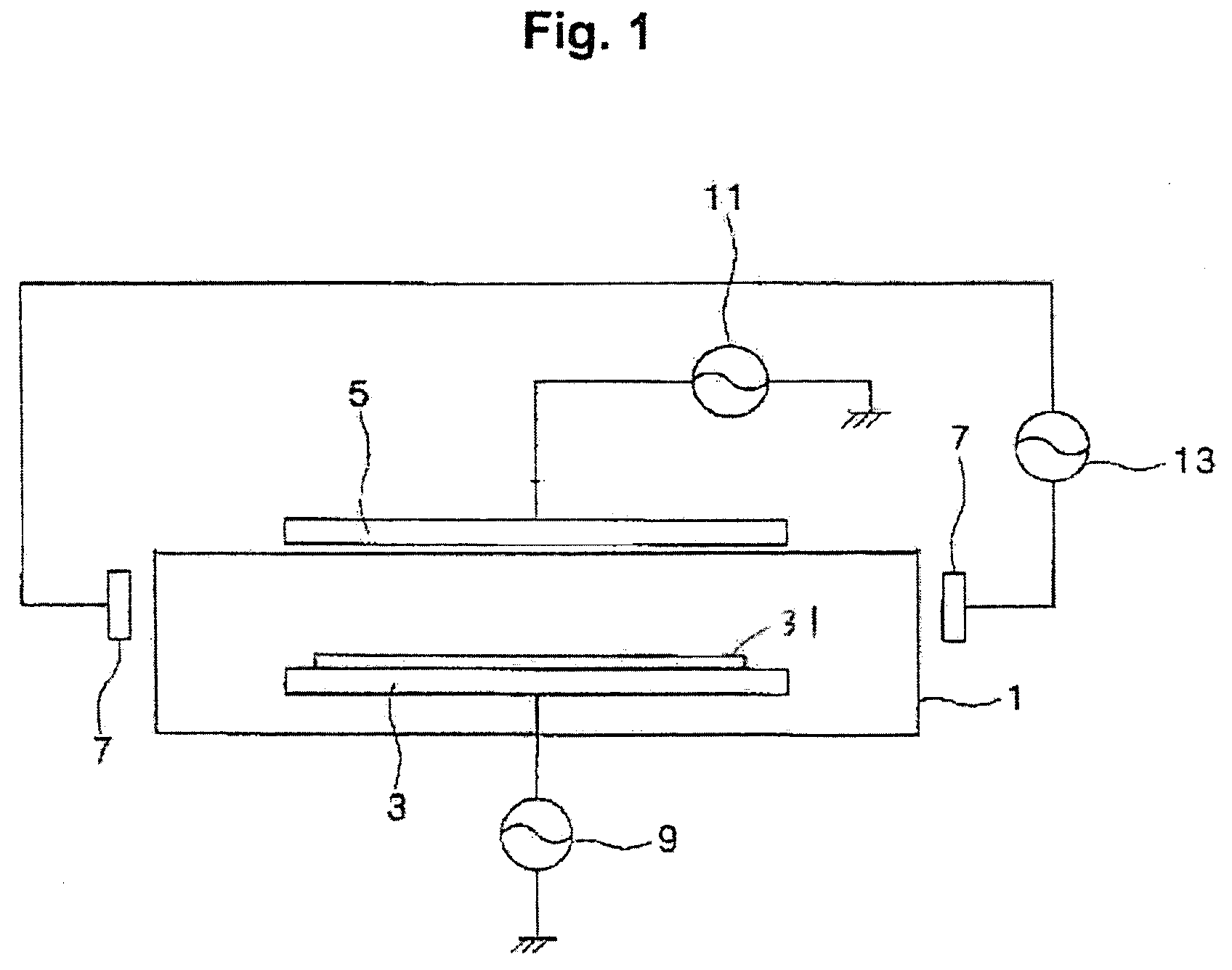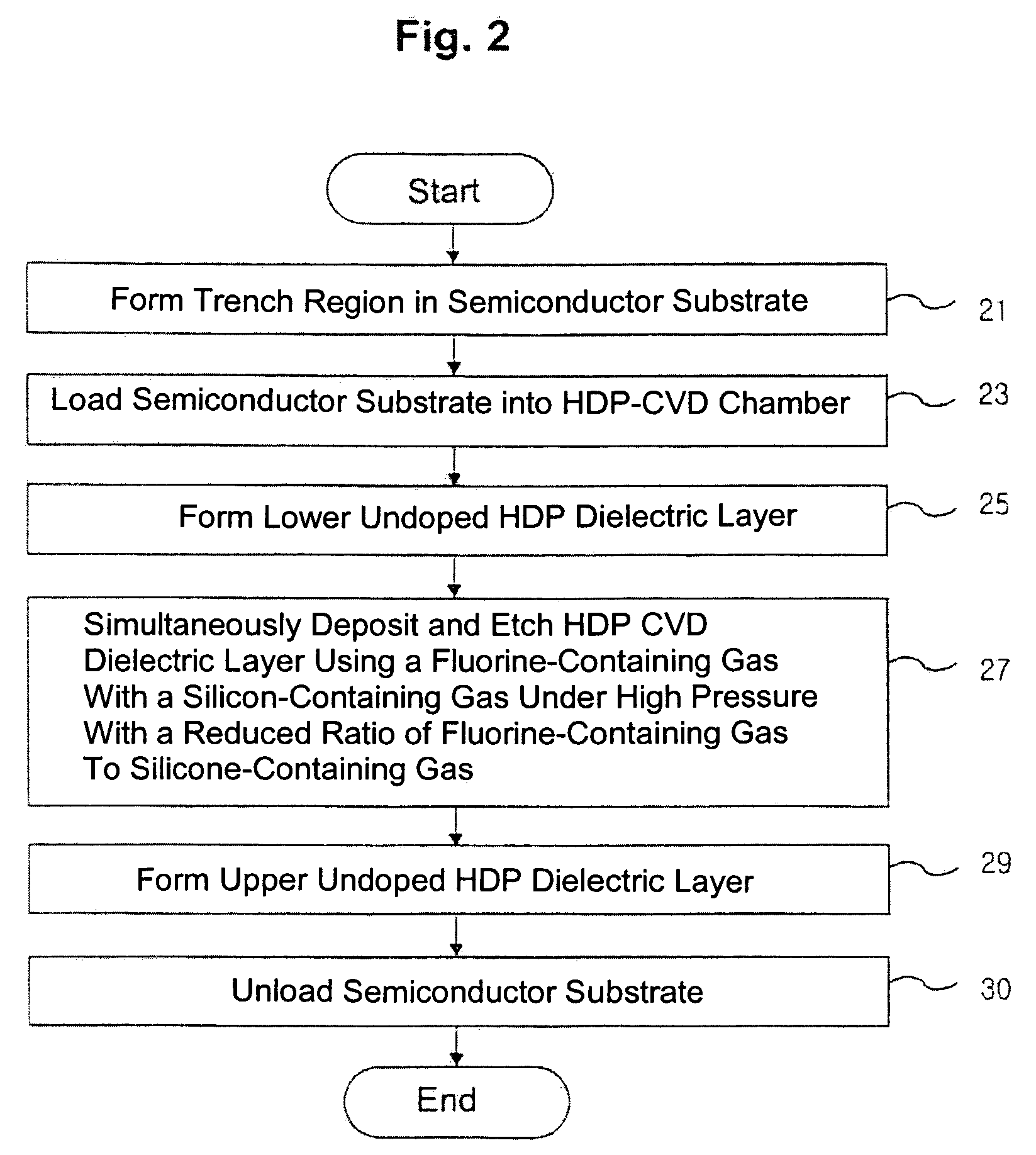High-density plasma (HDP) chemical vapor deposition (CVD) methods and methods of fabricating semiconductor devices employing the same
a technology of high-density plasma and chemical vapor deposition, which is applied in the field of high-density plasma (hdp) chemical vapor deposition (cvd) methods and methods of forming semiconductor devices, can solve the problems and increasing the difficulty of narrowing. narrow, the effect of reducing the number of fluorine atoms
- Summary
- Abstract
- Description
- Claims
- Application Information
AI Technical Summary
Benefits of technology
Problems solved by technology
Method used
Image
Examples
Embodiment Construction
[0024]The present invention concerns the deposition of a dielectric layer using high density plasma (HDP) chemical vapor deposition (CVD) techniques. The deposited layer has improved gap-fill capabilities as compared to the prior art HDP CVD methods.
[0025]In the following description, numerous specific details are provided. However, one skilled in the relevant art will recognize that the invention can be practiced without one or more of the specific details, or with other methods, components, materials, etc. In other instances, well-known structures, materials, or operations are not shown or described in detail to avoid obscuring novel aspects of the invention.
[0026]In general, HDP-CVD systems operate at lower pressure ranges (a few mTorr) than do low-density plasma systems. This is because such low pressure levels improve gap-fill results by increasing the mean free path of ions and dissociated species. This has been thought to increase the probability that such dissociated species...
PUM
| Property | Measurement | Unit |
|---|---|---|
| pressure | aaaaa | aaaaa |
| thickness | aaaaa | aaaaa |
| thickness | aaaaa | aaaaa |
Abstract
Description
Claims
Application Information
 Login to View More
Login to View More - R&D
- Intellectual Property
- Life Sciences
- Materials
- Tech Scout
- Unparalleled Data Quality
- Higher Quality Content
- 60% Fewer Hallucinations
Browse by: Latest US Patents, China's latest patents, Technical Efficacy Thesaurus, Application Domain, Technology Topic, Popular Technical Reports.
© 2025 PatSnap. All rights reserved.Legal|Privacy policy|Modern Slavery Act Transparency Statement|Sitemap|About US| Contact US: help@patsnap.com



